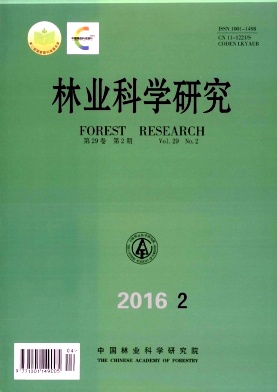|
[1]
|
Zhu L H, Ye J R, Negi S, et al. Pathogenicity of aseptic Bursaphelenchus xylophilus[J]. PLoS ONE, 2012, 7(5): e38095. |
|
[2]
|
Pereira F, Moreira C, Fonseca L, et al. New insights into the phylogeny and worldwide dispersion of two closely related nematode species, Bursaphelenchus xylophilus and Bursaphelenchus mucronatus[J]. PLoS ONE , 2013, 8(2): e56288. |
|
[3]
|
Mallez S, Castagnone C, Espada M, et al. First insights into the genetic diversity of the pine wood nematode in its native area using new polymorphic microsatellite loci[J]. PLoS ONE, 2013, 8(3): e59165. |
|
[4]
|
Zhao H, Chen C, Liu S, et al. Aseptic Bursaphelenchus xylophilus does not reduce the mortality of young pine tree[J]. Forest Pathology, 2013, 43(6):444-454. |
|
[5]
|
Qiu X W, Wu X Q, Huang L, et al. Specifically Expressed Genes of the Nematode Bursaphelenchus xylophilus involved with early interactions with pine trees[J]. PLoS ONE, 2013, 8(10): e78063. |
|
[6]
|
Fire A, Xu S, Montgomery M K, et al. Potent and specific genetic interference by double-stranded RNA in Caenorhabditis elegans[J]. Nature, 1998, 391 (6669):806-811. |
|
[7]
|
Elen A F, M Auro D V, John T J, et al. Analysis of chitin synthesis function in a plant parasitic nematode, Meloidogyneartiellia, using RNAi[J].Gene, 2005, 349(2): 87-95. |
|
[8]
|
Kimber M J, McKinney S, Master S, et al. Flp gene disruption in a parasitic nematode reveals motor dysfunction and unusual neuronal sensitivity to RNA interference[J]. Faseb Journal, 2007, 21(4): 1233-1243. |
|
[9]
|
Kikuchi T, Shibuya H, Aikawa T, et al. Cloning and characterize attion of pectate l yeasts expressed in the esophageal gland of the pine wood nematode Bursaphelenchus xylophilus[J]. Molecular Plant-Microbe Interactions, 2006, 19(3): 280-287. |
|
[10]
|
Mota M M, Takemoto S, Takeuchi Y, et al. Comparative studies between Portuguese and Japanese isolates of the pinewood nematode, Bursaphelenchus xylophilus[J]. Nematology, 2006, 38(4): 429-433. |
|
[11]
|
Cheng X Y, Dai S M, Xiao L, et al. Influence of cellulase gene knockdown by dsRNA interference on the development and reproduction of the pine wood nematode, Bursaphelenchus xylophilus[J]. Nematology, 2010, 12(2): 225-233. |
|
[12]
|
Jackson A L, Linsley P S. Recognizing and avoiding siRNA off-target effects for target identification and therapeutic application[J]. Dressnature Reviews Drug Discovery, 2010, 9(1): 57-67. |
|
[13]
|
Persengiev S P, Zhu X, Green M R. MR: Nonspecific, concentrationdependent stimulation and repression of mammalian gene expression by small interfering RNAs (siRNAs)[J]. Rna-a Publication of the Rna Society, 2004, 10(1): 12-18. |
|
[14]
|
Caffrey D R, Zhao J, Song Z L, et al.siRNA off-target effects can be reduced at concentrations that match their individual potency[J] . PLoS ONE,2011,6(7) : e21503. |
|
[15]
|
Ma H B, Lu Q, Liang J, et al. Functional analysis of the cellulose gene of the pine wood nematode, Bursaphelenchus xylophilus, using RNA interference[J]. Genetics & Molecular Research, 2011, 10(3): 1931-41. |
|
[16]
|
Lee D W, Kang J S, Chan S J, et al. Identification and biochemical analysis of a novel pectate lyase 3 gene in Bursaphelenchus xylophilus[J]. Journal of Asia-Pacific Entomology, 2013, 16(3): 335-342. |
|
[17]
|
Kulas J, Schmidt C, Rothe M, et al. Cytochrome P450-dependent metabolism of eicosapentaenoic acid in the nematode Caenorhabditis elegans. Archives of Biochemistry & Biophysics, 2008, 472(1): 65-75. |
|
[18]
|
Aikawa T, Kikuchi T. Estimation of virulence of Bursaphelenchus xylophilus (Nematoda: Aphelenchoididae) based on its reproductive ability. Nematology, 2007, 9(3): 371-377. |
|
[19]
|
Shinya R, Takeuchi Y, Ichimura K, et al. Establishment of a set of inbred strains of the pine wood nematode, Bursaphelenchus xylophilus (Aphelenchida: Aphelenchoididae), and evidence of their varying levels of virulence. Applied Entomology & Zoology, 2012, 47(4): 341-350. |





 DownLoad:
DownLoad: